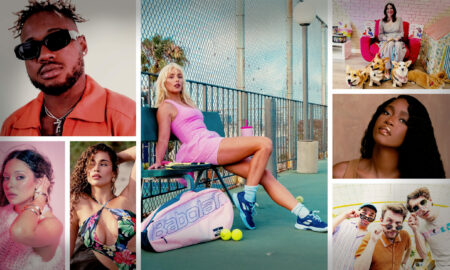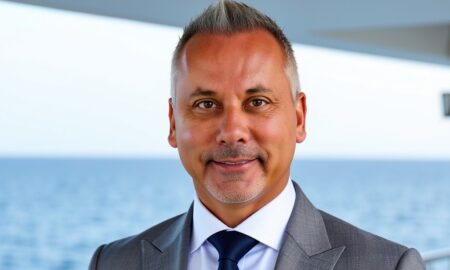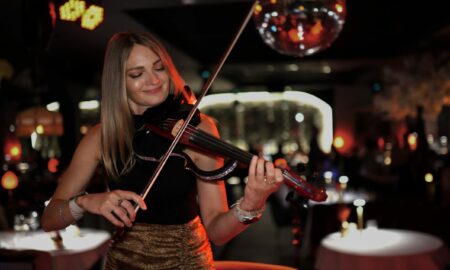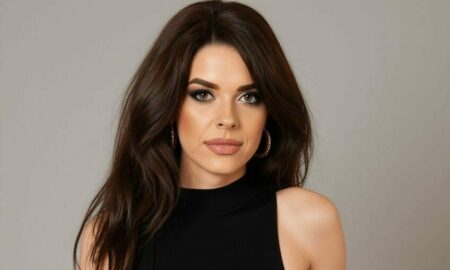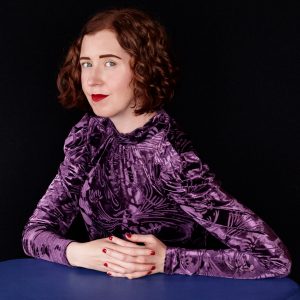
Today we’d like to introduce you to Desirée Pfeiffer.
Hi Desirée, so excited to have you with us today. What can you tell us about your story?
Like many photographers, it started with my dad giving me his old Pentax K1000 film camera when I was 15 and taking a photo class in high school. It was the first thing I had tried that came naturally and that everyone encouraged me to pursue. I spent all my time during high school focused on photography; it became how I defined myself. During my junior year of high school, I took a summer college course offered to high school students at Savannah College of Art & Design (SCAD) in Savannah, Georgia. That summer solidified my path. The school was impressed by my portfolio of work created during the program and offered me early admission. After a year of studying at SCAD, I realized that living in the South was not a great fit for me, so I moved to San Francisco and finished up my bachelor’s degree at the Academy of Art University. After graduation, I moved to London on a 6-month visa. London is where I first started photo assisting and shooting editorial portraits. Through a long series of events, I was able to extend my visa and continue working there. While living in London, I was selected to be in a group show at the National Portrait Gallery, the Taylor Wessing Photographic Portrait Prize, an international open call to showcase the best in contemporary portrait photography. It’s a fascinating competition and exhibit because the submissions are judged without the photographers’ names known until they are chosen. You end up with an incredible exhibition of famous and well-known photographers displayed next to emerging and unknown photographers based purely on the merit of the work. Being part of this exhibition was the catalyst for a commission by Britain’s House of Lords, a solo exhibition at the Palace of Westminster, and an additional artist work visa.
Alright, so let’s dig a little deeper into the story – has it been an easy path overall and if not, what were the challenges you’ve had to overcome?
It’s doubtful you’ll find many creatives that have had an easy path. Creative fields are inherently tricky to navigate in terms of economic stability, creative fulfillment, and mental health. For myself, my biggest obstacle has been my mindset. In the beginning, I spent a fair amount of time dealing with imposter syndrome, perfectionism, and ultimately anxiety. I thought I had to know everything about the business of photography, how to do everything myself technically, and that right out the gate I needed to produce images as good as the work of people I greatly admired. I did not take into account that they had huge budgets and a team of people helping them. I was so hard on myself, and I think that delayed a lot of progress I could have been making early on. I was my own worst enemy. I didn’t feel confident selling my skills and abilities. For example, while in London, I applied for a part-time retouching job at a photo studio, and I was so nervous the night before the interview that I didn’t sleep. I had to bring in my print portfolio and do a series of photoshop tests while they watched. I was a nervous wreck, screaming on the inside. After the test, while they were looking at my portfolio, they told me how impressed they were and that I had a “quiet confidence.” While laughing in my head at that comment, it was a pivotal moment. I realized that I was creating all these obstacles; my insecurities were not reality. I still use this memory today whenever imposter syndrome creeps in.
What are you most proud of? What sets you apart from others?
I create highly stylized portraits and still lifes. My commissions are a mix of commercial and fine art. My images have lush color palettes and are conceptual, whimsical, and narrative. My subjects are musicians, politicians, actors, families, and everyone in between. For my portrait work, I specialize in cinematic staged portraits. My images tell a story, or at the very least permit the viewer to imagine a larger scenario beyond the image itself. Voyeuristic in a sense, I try to create images that give the viewer the sense that there is a backstory within the image. Individuals, their actions, and surroundings are carefully selected. They become a character in a story much larger than themselves. My approach in my still lifes is creating an atmosphere in a miniature landscape. Color, shapes, and mixing textures are primary considerations. I think of the composition in graphic terms, ensuring there is balance and fluidity.
As an artist, I’m most proud of having my work in the permanent collection of the U.K. Parliament and being the first photographer ever commissioned by the House of Lords; beforehand, their art commissions were typically paintings and sculptures.
The thing that often sets me apart from others is how hands-on I am with every element of my work. Most of my work has been imagined, styled, shot, retouched, and printed by me. I typically work with a minimal crew of people; on some things, like the still lifes, I work entirely alone.
Is there a quality that you most attribute to your success?
The characteristic I feel is most important to my success is experimentation; an artist must evolve. I’ve tried to push myself to try new things and not just do what is easy and comfortable. Early on, I didn’t particularly enjoy shooting things in a studio, preferring to shoot outside or in interesting indoor locations. While working part-time in a photo rental department, I took advantage of a studio they had above the shop; they allowed me to use it for free. I realized that my hesitation of shooting in studios was that they were blank canvases; that I had to create atmosphere and mood out of nothing. It forced me to think about set design and lighting everything from scratch instead of mixing the natural ambient light of locations with my strobe lights. Almost every Saturday, I would go to the studio and shoot portraits of people and experiment with light. It elevated my lighting skills because, once you learn how to light a person and a set in a studio from absolute darkness, you can light anything. A more recent example of experimentation is my still-life photography. Three years ago, an art director in Switzerland asked me to contribute to a book and exhibition with the theme of flowers. I had been thinking I wanted to try still life photography, and I took this opportunity to force myself to do it with an impending deadline. Subsequently, Italian Vogue featured two images I created for the project, and I felt like I was onto something new and exciting. Since then, I’ve been focusing and experimenting more with my still-life photos, especially after Covid hit. I’ve been making set pieces from acrylic resin, working with clay, and, most recently, different paper marbling techniques. I’m trying to learn as many things as possible to incorporate into my set design.
Contact Info:
- Email: [email protected]
- Website: https://www.desireepfeiffer.com
- Instagram: https://www.instagram.com/desireepfeiffer/
- Other: https://www.etsy.com/shop/DesireePfeifferPhoto








Image Credits:
All images by Desirée Pfeiffer

